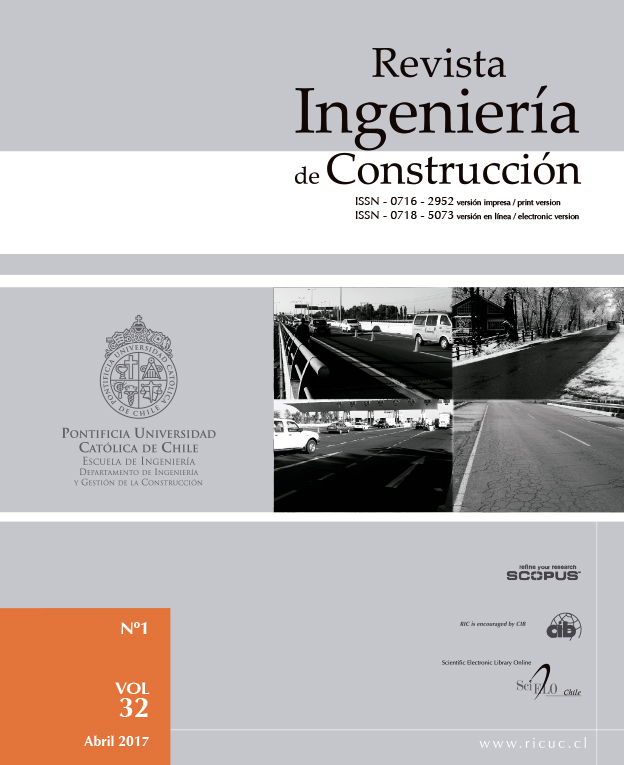Permanent deformation model for pavement condition assessment
DOI:
https://doi.org/10.4067/S0718-50732017000100004Keywords:
Deformaciones plásticas, pavimento flexible, ahuellamiento, deflexión del pavimento, modelo productivoAbstract
For many decades, studies have addressed the development of plastic strains in flexible pavements. Currently, there are models available that allow predicting this type of failure, and it is a common practice to include them in the structural design of pavements. However, variables required for this prediction are complex and difficult to obtain on site; therefore, they are not easy to apply in the diagnostic process. The measurement of deflections is a structural evaluation method for flexible pavements, whose value may include the competence of the pavement as a whole. This research seeks to correlate deflection data on the pavement’s surface with probable plastic strains over time, and to use this prediction to calculate the pavement’s remaining service life, with the criterion of maximum rutting allowed. Real-scale data from 4 different lanes were tested by the National Laboratory of Materials and Structural Models of the University of Costa Rica. The proposed model was able to predict future rutting using as input the thickness of the pavement structure, the surface deflection measured at loads of 40 kN, and the equivalent axle repetition; a high goodness of fit was achieved. The rutting level estimate should help maintenance and rehabilitation policies of the road management system to be assessed and applied at the right time.


